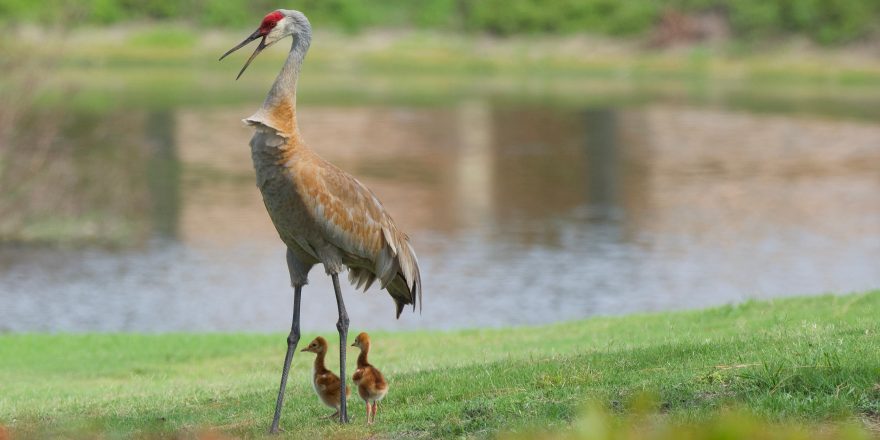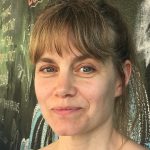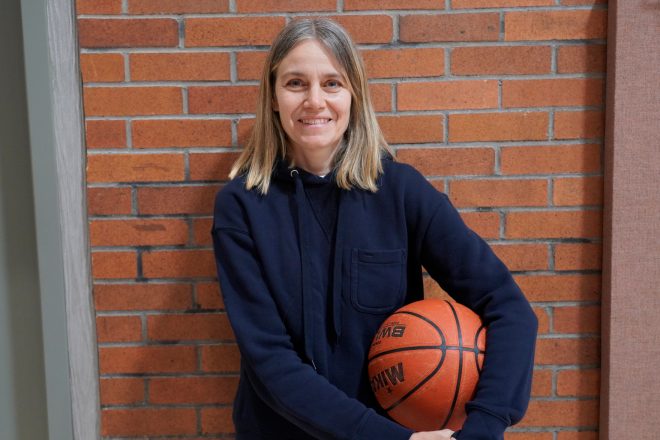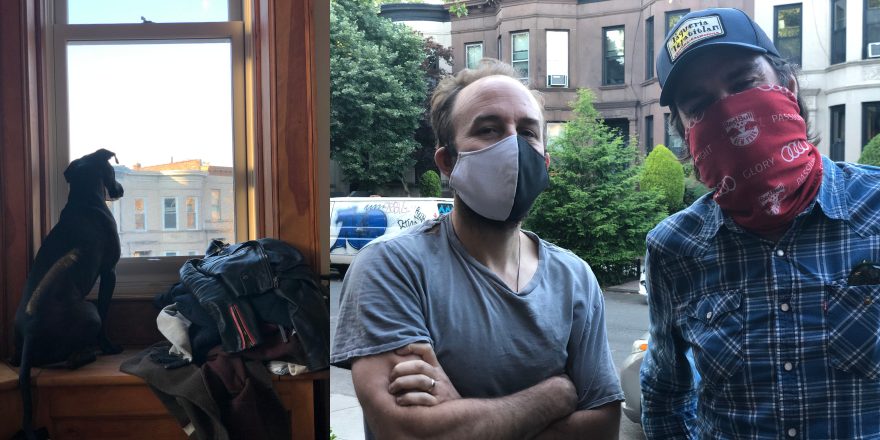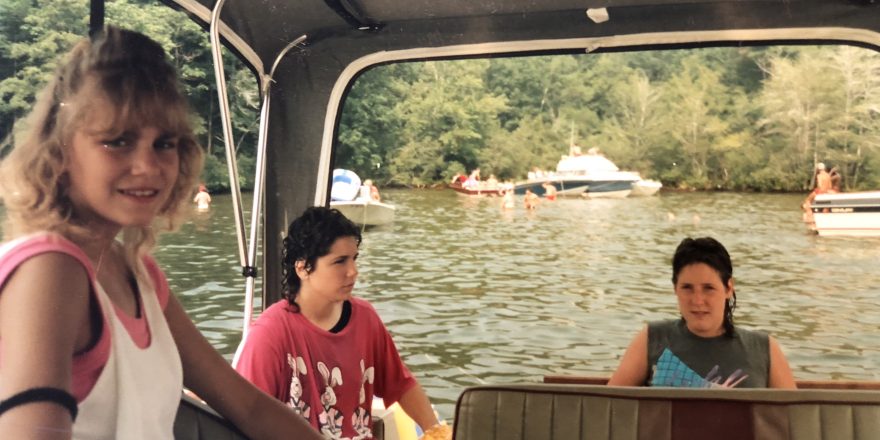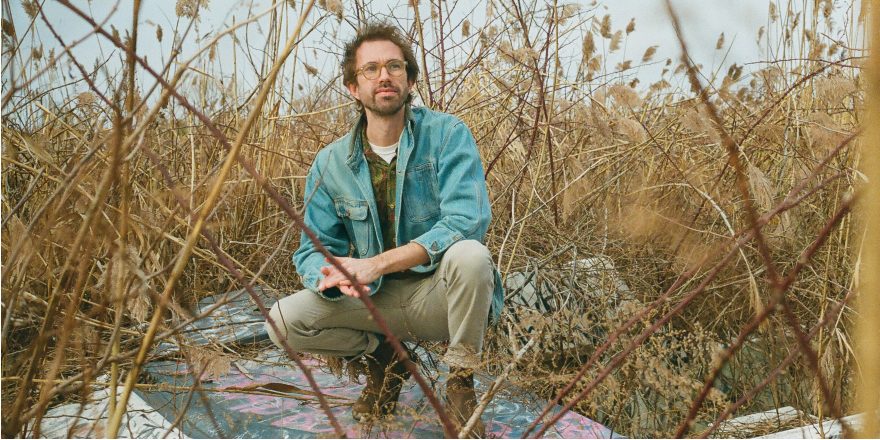Going to Florida is always supposed to be a vacation. But I felt like I didn’t deserve a vacation. I hadn’t found the next project, hadn’t worked on anything in months. The gap between finishing a project and starting another was growing. Financing was always hard to find, but now it seemed worse. I, like so many other entertainers and filmmakers, felt stuck, as worried voices echoed warnings of the downfall of cinema. It’s easy to become stagnant in a world saturated with too many mediocre shows and TikTok posts. The temptation to take another route has never been more alluring. But what choice do we have? We want to tell stories. Stories about characters on a journey who sometimes do funny things, sometimes heroic things, usually memorable things. But what if we lived those stories instead of telling them? What if we became the legend?
The world seems ripe for real heroes and saviors right now; funny people, too. Why try to write a character with a meaningful life – why not live it? I couldn’t watch my dinghy sink in the floodwaters any longer. I needed to make a decision and set sail. I either had to sit and write with no guarantee my character would get a screen, or go make life my story. I’d captain my raft and choose my way in the Sunshine State, where saturation would follow me. It wasn’t just the entertainment world that had too much. Florida had too much of everything else: too many sunbathers, too much traffic and too many golf courses. I wanted to see a change. I wanted to see someone taking a different route through the crowded ports.
I was about to visit a man becoming his own story, his own legend.
After my son’s last day of 11th grade, he and I flew down to Florida to see my dad. My son has been photographing wildlife since the age of six. My dad also takes pictures, documenting the birds around him. Florida was a hotspot for many species of birds, all types of humans, and for a 17 -year-old and his grandpa both at the ready with telephoto lenses.

My son and my dad woke at 5:30 every morning to capture birds in the soft light of the rising sun. I, antsy and nervous, sat in front of a computer for hours staring at a blank page, a blank tomorrow, and hoped that an email from a film festival, agency or gallery, a production company or curator, would tell me, “We love you. We want to have your babies.” I wouldn’t have to change my direction. I’d stay on course and nurture my projects. I’d have meetings and sparkles in my water. I’d be making movies and art, writing scripts. I checked my emails. 50 of them. All spam. Delusion can overtake an artist. Indecision, too.
Florida in the summertime is sweaty. You’re conscious of the creases where your skin folds, where water stains grow in the seat of your pants, like new discoveries on an old map. My dad lives in an air-conditioned community near the Gulf Coast, in an economy that tries to get the most beach and comfort out of a hot, humid habitat that maybe wasn’t meant for more construction, more second homes, more golf courses. He lives inland, 27 feet above sea level. “This will be the best location,” he says knowingly, “when the flood waters rise.” His lanai, a back porch surrounded by a screen, looks out onto the well-groomed hills of a golf course. In the morning, the greenkeeping crew gets to work. The dew is removed from the short grass, the mowers trim the green, and sprayers appear with unlabeled cans on their backs to apply pesticides, herbicides and fungicides to the earth. Like a visit to the salon, the earth’s scalp is treated with toxic chemicals to make it look pretty, to give it greener highlights, to make it appear more natural than it actually is. Adjacent to my dad’s house is a peninsula about the size of a one-bedroom apartment in New York. The peninsula remains wild with pines, palms and tall grasses. Great Blue Herons nest in the trees; Sandhill Cranes on the ground. The pond, where alligators roam, join the two opposing worlds: the Natural World and the Golf World. The taller grass of my dad’s backyard ends where the golf course begins.
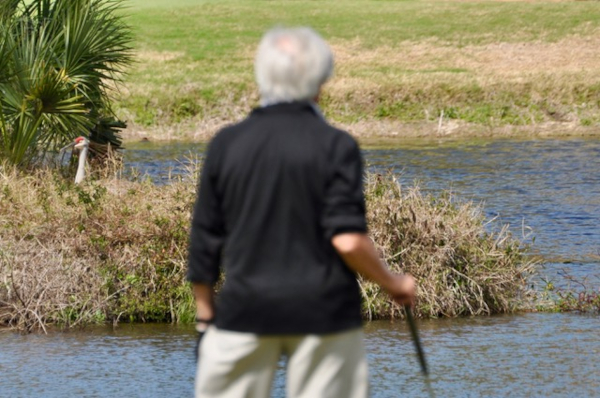
The members of the community association bought the property that the golf course is on. They hoped to prevent big builders from developing the land, from gutting the earth and stacking up their condos and cash. The community agreed to let the golf course stay. This had to be better than an influx of new homes and people. Too bad they couldn’t have made it Forever Wild, instead of the Forever Forced Green that it is. The wildlife was an attraction for many of the homebuyers. They were happy to live with the flying, crawling, stalking residents of a forgotten wilderness. For the golf course management, though, the wildlife is a nuisance.
Since my dad first moved from New York to Florida, 28 years ago, the population in his county has increased and so has limited space for animals. It became especially noticeable with birds. Because the trees are being cut down, migrating birds land on traffic lights and Stop signs to catch their breath, rest their wings and search for food. The natural habitat is of no use to real-estate investors, so the forests are being cleared to make way for hotels and luxury apartments. Spikes are fastened onto poles to divert birds from landing. Tortoises wander homeless or get buried alive as their burrows are filled by giant plows. Destroying a Gopher Tortoise’s nest is supposed to be illegal. Ospreys build nests on light poles at Whole Foods and Bald Eagles build them on power lines. Muscovy Ducks take shade under oak trees and parked cars in busy parking lots, and Sandhill Cranes walk across 40 mph roads with their newly hatched chicks. There are too many cars going too fast. There’s always roadkill on suburban roads – raccoons, armadillos, osprey. My dad has rescued the survivors of many hit and run collisions – a Roseate Spoonbill, a Black Skimmer, a Sandhill Crane, all with broken wings. A catcher is someone who tries to catch the bird and bring it to a vet. But the catchers in my dad’s area said the sanctuary was too full. The vets said they couldn’t mend broken wings. Most attempts at a “catch, heal and release” became a “catch and kill” type of rescue. Maybe you can call it a “rescue,” if putting a bird out of its misery is a rescue.
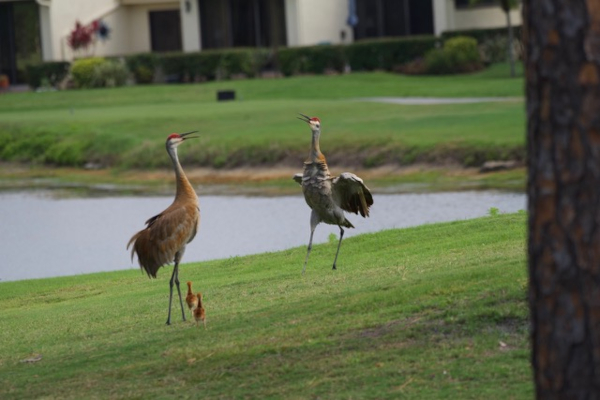
Within the tall grasses and palms at the tip of the peninsula there was a nest. This beachfront property was the home of two local Sandhill Cranes. The nest had been there when my dad moved to Florida. The cranes kept up the maintenance of their old home, dragging in twigs when it was time to lay eggs. From his kitchen window, at a counter where he kept a set of binoculars and a very large collection of empty Smucker’s jars, my dad observed his neighbors, Mr. and Mrs. Sandhill Crane.
They were a sight to see! Standing more than three feet tall, they slowly walked on their long legs through shrubby backyards, past screened-in human cages, and across the golf cart road. If you were lucky enough to be near them, you’d get a glimpse of prehistory through their eyes. My dad took pictures of them and talked to them when they foraged in his backyard for a meal. They once displayed their mating dance in front of him, jumping up and down and spreading their wings in celebration. My dad watched eggs hatch, usually two. He watched the parents teach the young ones how to poke a hole in the golf course turf and pull out a worm. He observed them every day; the chicks were growing into fledglings, learning to fly and to swim. He witnessed the last stage of parenting, when the young crane says goodbye. His graduation from the nest and his runway toward independence was from the edge of the pond, through the green, past the 13th hole and into the air. The young crane was up and then he was gone.
My dad has seen 15 generations go through the process.
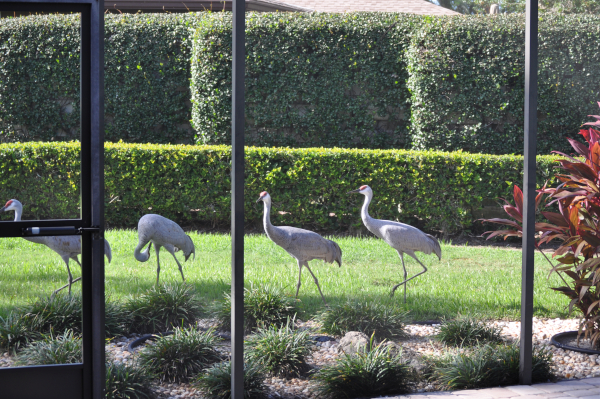
My dad became obsessed with the cranes. While he was learning their behavior, the golfers were still coming. Golf carts of old white men in baseball caps would pull up to the tee box near the crane’s nest. They’d whack their balls over the cranes and onto the bright green hills of the golf course. Older women in pink skorts and pink tops stood like middle-aged Barbies in the sun. Men, who might have swallowed small planets for breakfast, stood behind my dad’s house, staring at a white ball with a metal stick in their hands, aiming, then tapping it toward a manmade hole in the ground. The cranes would slowly walk up the hill, soon after the golfers left. Crows communicated to each other from the clump of trees on opposite sides of the course. Limpkins howled and screeched their input from the pond. A hawk, chased by a mockingbird, would dart overhead while another set of golfers stood at the tee box, getting ready to hit long drives. And again, the greenkeepers would come through.
In 2015, as my dad stood at his kitchen window, filling his jars with chicken soup, he witnessed a man on a tractor ride onto the peninsula. He was sure this was a mistake. No people were allowed on the peninsula. He ran outside, waving his hands around yelling to the guy about the nest, but there was no stopping him. The tractor mowed down the cranes’ home in less than five minutes. The nest, which had been there as long as he’d been collecting Smucker’s jars, was gone.
He waited for the cranes to return.
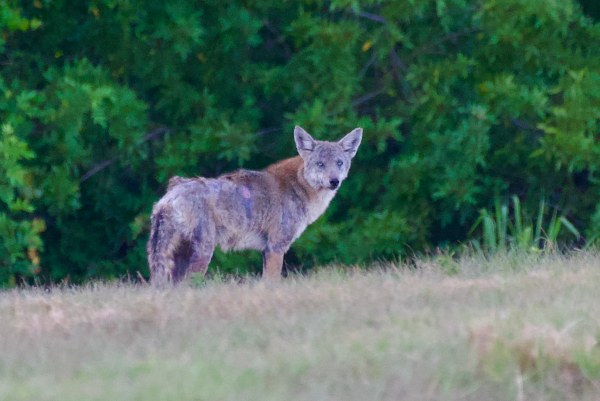
Two months later, he saw the cranes wandering on the peninsula. He called me, relieved. There were four of them. The two parents and their offspring, now grown. They seemed to be investigating. There were no longer tall grasses to help them blend in, to protect them while nesting in the summer sun. They were completely exposed to alligators and golf balls. The peninsula had been leveled. They bent over the spot where their nest used to be. They lingered, then started to rebuild.
Over the next few years, the cranes tried to stay in their home. They started to settle in the same place they’d always been, at the edge of the pond. But it wasn’t safe anymore. They relocated toward the center of the peninsula, where there was at least the cover of an oak tree and some palms. They hatched a few more generations of birds. Then, in 2019, it happened again.
By the beginning of the pandemic, my dad had upgraded his camera equipment. When the mower struck again, he had only one choice. He got out his telephoto lens. He took aim at the golf course employee and captured the demolition of the nest. He got in touch with law enforcement, with the Florida Fish and Wildlife Conservation. Sandhill Cranes are on the threatened list in Florida. The authorities came to the peninsula, got a statement from my dad, put up a sign and then tried to educate the management in charge of the golf course. Were they just ignorant of living with other creatures? Or, maybe, they didn’t care.
The Florida Fish and Wildlife Conservation put up a sign: “Sandhill Crane nesting area. No trespassing.” Now my dad had an ally.

One day, when my dad was on his lanai talking with my husband, he observed an older man ride his golf cart up to the peninsula. The man was collecting golf balls along the edges of the pond. My dad sat up a little taller in his seat, his eyes focusing in on the intruder. He muttered a warning like the soft growl of a guard dog who sees someone getting too close to his home. He watched, in disbelief, as the man stepped onto the peninsula and started rummaging around like he was in his basement. “Can you believe this?”, I can hear him say. Did this stranger not respect the home of another species? If someone walked onto this man’s property, you can guarantee he’d shoot him dead. My dad disappeared into his house. Seconds later, the glass door slid open. My dad stepped onto the lanai, his camera charged and loaded. He moved quickly to his backyard and out on the golf course, his viewfinder to his eye, the camera body to his face, and the telephoto lens extended toward the trespasser. He made sure the man could see him as he approached, his arthritic finger on the trigger. My dad asked the stranger if he’d read the sign. The man responded that he didn’t have to read the sign. The discussion got heated. The man got a golf club out of his cart and raised it to my dad. “This is my golf course,” he insisted. “You can’t tell me what to do.” My dad lifted his camera to his eye and snapped away.
The rogue golfer didn’t know it, but he had a role in the making of a legend. My dad saw the bigger purpose now. He became more vigilant of the state of all things wild in his community. He now rides his bike on a three-mile route around five manmade ponds. He wears his helmet after being hit by a car. Attached to his bike is an old-fashioned Harpo Marx air horn to wake up pedestrians walking with their faces in their phones. Nature and our interference with it has presented him with many duties. One day, he followed a troubled Anhinga to the middle of the street and then threw himself on top of him. The midday tackle brought cars to a halt, as he fumbled to grasp the long neck of the bird. He removed a pair of scissors from his pocket. Onlookers in cars and golf carts couldn’t believe their eyes as this old man struggled in the middle of the road wrestling a bird while dodging its spearlike beak. He finally got a good grip on its head and snipped the twine that bound its mouth shut. The starving female, who he’d observed for 14 days, was finally liberated.
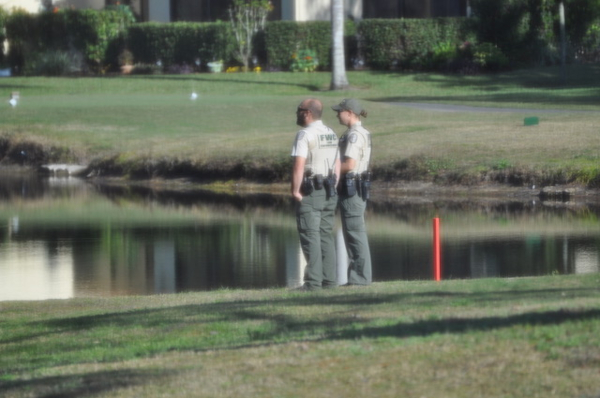
Gopher tortoises were nesting in some sandy fields near the office. They dug holes in the earth and laid eggs there. Without protection, they were vulnerable to landscapers, mowers and off-leash dogs. He asked the management to put up a sign, or rope off the nesting sites. No one responded. So he bought sticks and orange tape at Home Depot. He made his own protective gate around the nest. Either in oblivion or purposefully, we think a mower filled in the hole, burying the eggs alive.
My dad’s been a realtor for more than 50 years. At 79, he’s still selling houses. Now, Nature needs him and protecting wildlife has become a full-time job. He’s the legend I speak of. Living his own story. He’s an avian activist, a Don Quixote of the American Tropics, a Dr. Doolittle confronting a Confederacy of Dunces, a Braveheart for the birds.
On my last day in Florida, it seemed every time I looked up there was a bird in front of me. First through a window, as I walked on a treadmill in an air-conditioned gym, a Great Blue Heron landed in the parking lot and looked in at me. He stood a minute, then pooped on the hot pavement and flew off. Seconds later, the treadmill sped up on its own. I was running 55 mph. I couldn’t make it stop. I jumped off. Was this a sign to walk out in nature instead of on machines? There was the crow I met near one of the big ponds. She sat on an oak branch above me. We made sympathetic crow calls to each other. Then there were the Sandhill Cranes. I was sitting out back on the lanai, busy on a phone call, and didn’t notice them approach. I glimpsed large bodies moving into my vision and there they were. Three long-legged birds with red and gray feathers walking right in front of me. They looked at me and me at them. Was this a connection? What should I make of these signs? Were they signs? Was there a story to tell? Did I have a legend to live? My dad certainly does.

As we drove to the airport, I watched a raccoon crawl through a fence toward the edge of a busy road. He was moving our way, doomed to get hit. He paused, and looked at the fast cars going by. As he turned around to return to the forest, we whizzed past him.
I stare at the once-blank page on my computer. Now it’s full of these words. I have a sense of completion, but so what? I didn’t rescue a bird like my dad did and continues to do.
I hear the billionaires are going to claim the moon is theirs, and jump ship, as Earth and its inhabitants suffer. Right now, when so many creatures are in need of change, whether they are two-legged, many-legged, finned or winged, paying SAG dues and waiting for financing seems a waste of time. It seems just as negligent as physically deserting Earth. There might be more important matters than getting my character on the screen. Why am I still waiting and writing? I could get my own scissors to liberate all those whose beaks have been bound.
All photos by Richard Plumb, unless otherwise stated, and courtesy Shannon Plumb.


